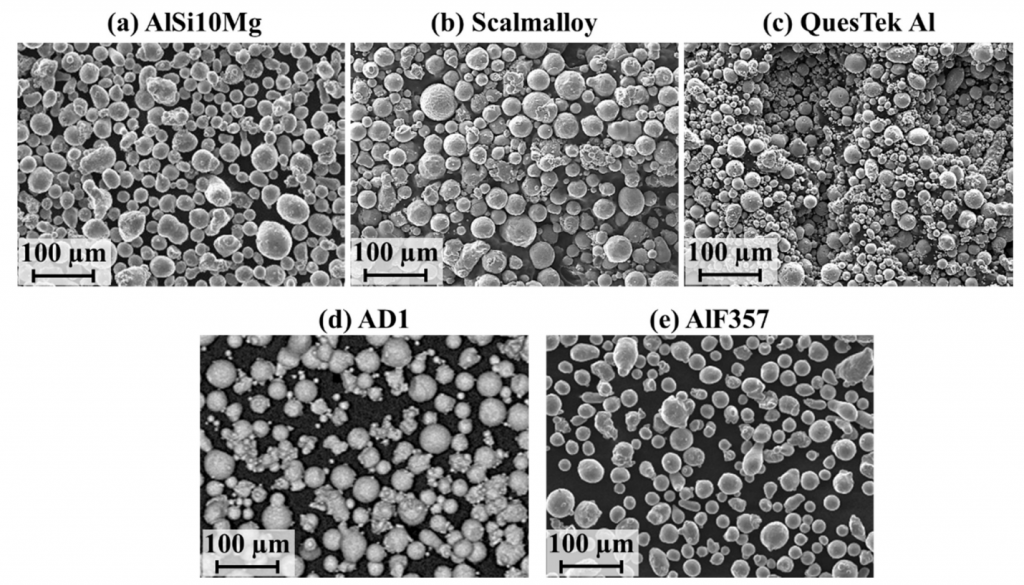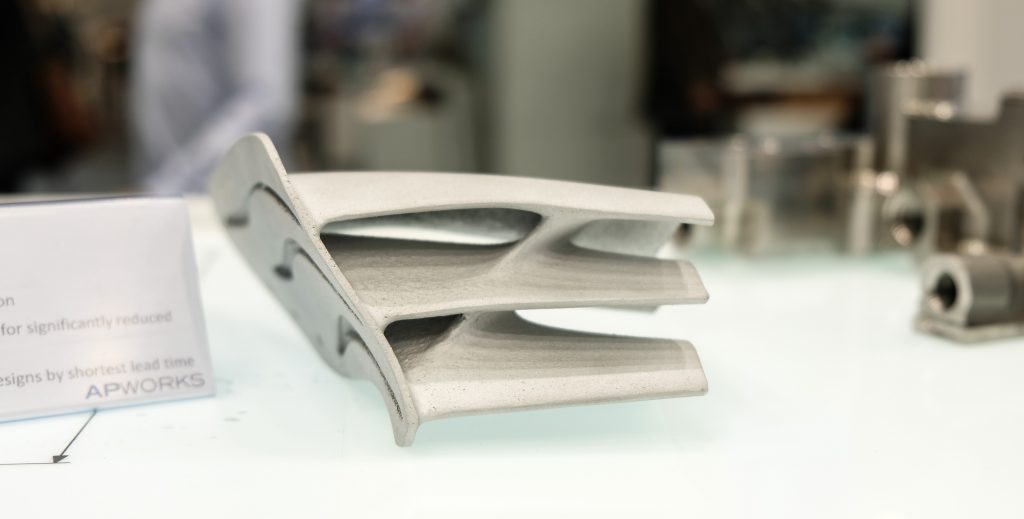A team of researchers comprising engineers from Auburn University and EOS North America has taken a deeper dive into the effects of build orientation on the structural integrity of 3D printed aluminum (Al) alloys.
The team put five of the most popular aluminum alloy powders to the test, including AlSi10Mg, Scalmalloy, QuesTek Al, Addalloy® 5T (AD1), and AlF357. Using powder bed fusion 3D printing technology, they studied how the orientation of a build modifies properties such as part microstructure, material porosity, and fatigue behavior, which are integral to understanding if the material is fit for high-stress industrial applications.
The research paper explains, “The use of aluminum alloys for additive manufacturing has recently gained significant attention, specifically in the aerospace industry. This has been resulting in introducing new high-strength Al alloys that are more compatible with the AM processes. However, it is critical to investigate the structural integrity of these newly developed Al alloys prior to being deployed in safety-critical load-bearing applications.”

The rise of aluminum in additive manufacturing
With metal 3D printing quickly become a strategic tool in industries such as automotive, defense, and healthcare, new material innovations arise on a rolling basis. Al alloys, in particular, are known for their high strength-to-weight ratios, hardenability, and excellent corrosion resistance, making them a prime choice for a wide variety of applications in the aerospace and motorsport sectors.
However, according to the Auburn researchers, 3D printing Al alloys is often significantly more challenging than other materials. The powder particles are light, exhibit poor flowability, attract moisture, have high thermal conductivity, and are highly susceptible to oxidation. This string of issues increases the risk of defects in 3D printed Al parts, which are known to be detrimental to any material’s mechanical properties (especially fatigue performance).
Interestingly, the build orientation of a part has also been shown to be a major factor in the type, size, and frequency of defects created. This has been attributed to the variations in thermal history experienced by parts in different orientations, making it necessary to evaluate how build orientation might affect the fatigue behavior of 3D printed aluminum components.

The effects of build orientation on structural integrity
The study involved 3D printing AlSi10Mg, Scalmalloy, QuesTek Al, AD1, and AlF357 samples in both vertical and horizontal orientations.
Firstly, the build orientation had no significant effect on the grain structure of the Al parts. When it came to defects, however, horizontal specimens featured much higher levels of volumetric defects than their vertical counterparts. Scalmalloy and AD1 exhibited the lowest variation in defect density between the vertical and horizontal builds, which was explained by the relatively low thermal conductivity of these two alloys.
Comparing the alloys to each other, AD1 outperformed AlSi10Mg, QuesTek Al, and AlF357 in fatigue performance regardless of the build orientation. This was a result of AD1’s lower defect density, high tensile strength, and higher elongation. While the horizontal Scalmalloy parts had slightly weaker fatigue performance than the horizontal AD1 parts, the vertical specimens of the two alloys had comparable fatigue lives.
The study concludes, “Although this study does not provide the overall fatigue properties, the data and the knowledge generated for five contemporary LB-PBF Al alloys built in different orientations can help AM users select a proper Al alloy for their application. Nevertheless, the AM users may need to generate more data for each alloy before using them in specific applications.”

Further details of the study can be found in the paper titled ‘Structural integrity of additively manufactured aluminum alloys: Effects of build orientation on microstructure, porosity, and fatigue behavior’. It is co-authored by P.D. Nezhadfar, Spencer Thompson, et al.
Earlier this summer, Italian 3D printing service provider BEAMIT developed a parameter set for 3D printing the high-performance ‘al2024′ aluminum alloy. Having now qualified the material, the company maintains that it performs better at both room and high temperatures than other comparable alloys, making it ideal for producing durable chassis, suspension, and engine parts with motorsport applications.
More recently, the UK’s Digital Manufacturing Centre (DMC) just became an approved supplier of 3D printed parts made of Scalmalloy. As part of the supplier certification, the DMC 3D printed a set of Scalmalloy components which were then inspected by APWORKS, the developer of the material. The part qualities achieved have placed the DMC in the top 1% of Scalmalloy part suppliers worldwide.
Subscribe to the 3D Printing Industry newsletter for the latest news in additive manufacturing. You can also stay connected by following us on Twitter, liking us on Facebook, and tuning into the 3D Printing Industry YouTube Channel.
Looking for a career in additive manufacturing? Visit 3D Printing Jobs for a selection of roles in the industry.
Featured image shows SEM imaging of the five Al powders. Image via Auburn University.


